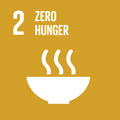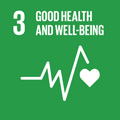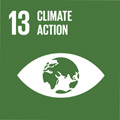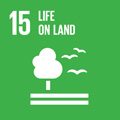- Docente: Renato Brandimarti
- Credits: 6
- SSD: BIO/19
- Language: Italian
- Moduli: Marco Rinaldo Oggioni (Modulo 1) Renato Brandimarti (Modulo 2)
- Teaching Mode: In-person learning (entirely or partially) (Modulo 1); In-person learning (entirely or partially) (Modulo 2)
- Campus: Bologna
- Corso: First cycle degree programme (L) in Biotechnology (cod. 8005)
-
from Mar 06, 2025 to Apr 10, 2025
-
from May 05, 2025 to May 30, 2025
Learning outcomes
Course contents
Viral Biotechnologies
Viruses are the most abundant biological entities on Earth and an extraordinary rich source of biodiversity. From this standpoint, the goal of the course is to analyze the possibility to use specific viral functions to repurpose cellular processes. The molecular basis of virus-host interactions will be discussed, in the frame of viral replication strategies, to evaluate the impact of possible therapeutic and biotechnological applications. To this purpose, state of the art methodologies to produce recombinant viruses will be presented.
From the analysis of currently available applications, the course will focus on potential developments of this approach, to encourage proposals/projects.
Three main areas will be covered:
- analysis of structural/functional characteristics of viruses;
- discussion of current biotechnological applications of viruses or viral elements;
- main characteristics of the biotechnological proposal and major evaluation criteria (significance, impact, innovation, research plan).
In more details, the course will be delivered as follows:
Introduction to viruses. General and distinctive characteristics. Schematic representation. Morphological-functional comparison between viruses and other micro-organisms.
Viral structure. Virion structural components. Assembly. Non-structural components.
Viruses’ replication cycles, with major emphasis on virus-host interactions.
Recombinant viruses. Generation methods, applications, and implications.
Biotechnological applications of viral functions.
Possible usage of viruses and/or viral functions for biotechnological purposes.
The biotechnological proposal.
Microbial Biotechnologies
Objectives of the course: (i) to present the main molecular technologies used for the study and genetic manipulation of microbes; (ii) to describe some biotechnological applications in biomedicine, in industrial processes and in bioremediation.
Contents:
Taxonomy and phylogenesis.
Microbial physiology and ecology.
Analysis of microbial communities.
Biotechnology in biomedicine.
Microbial biotechnology applied to the food and pharmaceutical industry.
Principles in Bioremediation.
Readings/Bibliography
Teaching material will be made available in digital format
Teaching methods
Lectures will be supported by Powerpoint presentations and by
discussion of relevant scientific reports (appropriate links will
be provided)
Assessment methods
At the end of the course, the student will present and discuss a proposal/project, aimed to employ viral/microbial functions for biotechnological purposes, taking in account feasibility, innovation, impact.
Students with special needs and/or certifications are invited to contact the course teacher, with DSA service (https://site.unibo.it/studenti-con-disabilita-e-dsa/it) in cc.
Teaching tools
Powerpoint presentations
Office hours
See the website of Renato Brandimarti
See the website of Marco Rinaldo Oggioni
SDGs




This teaching activity contributes to the achievement of the Sustainable Development Goals of the UN 2030 Agenda.
